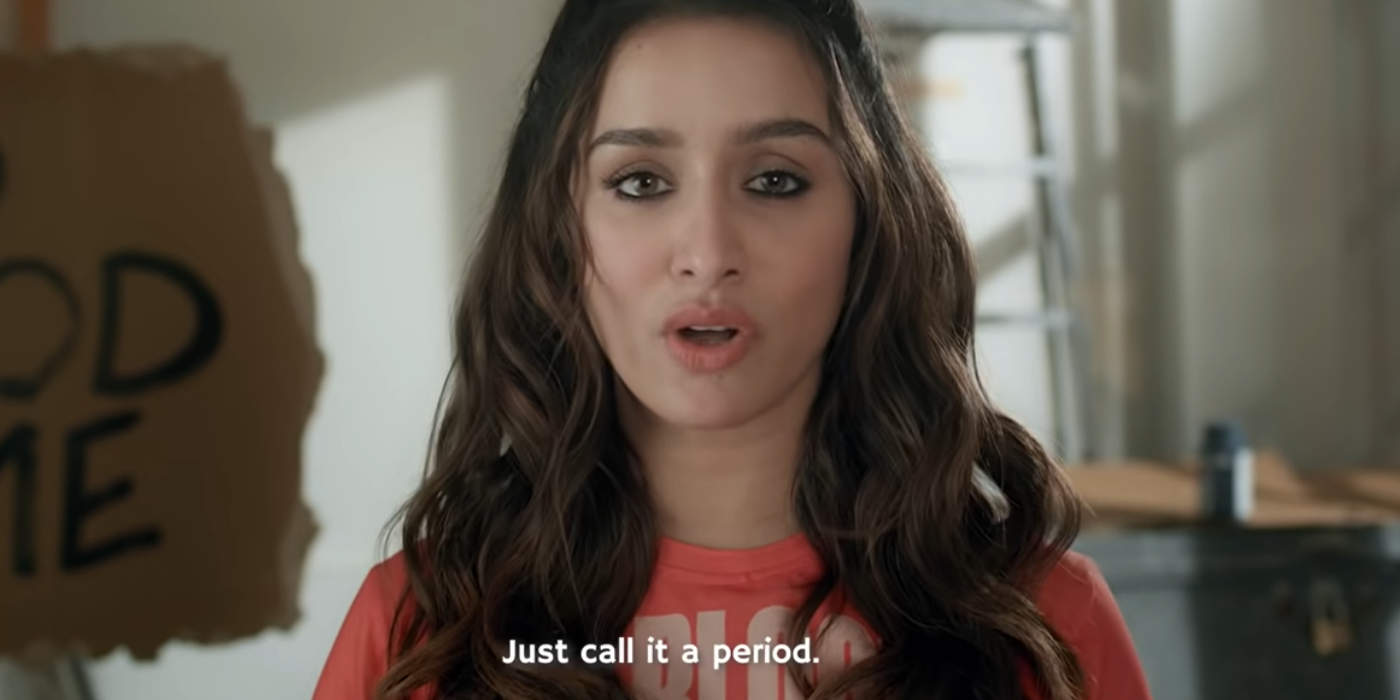Menstruation has been considered a distasteful and “uncomfortable” topic of discussion for years, considering the traditional ideas of shame and embarrassment associated with the biological process. For decades, most advertisements have shied away from using the word menstruation or even depicting blood in its natural colour. In fact, in the US, which is considered the holy grail of liberal ideas, it wasn’t until 1985 – 13 years after the TV ban on broadcasting menstrual products was lifted – that Friends co-star Courtney Cox used the word “period” for the first time. Most ads then showed periods to be a source of burden upon men, one ad for example stated, “Thanks to (product name), my wife acts like the woman I married.” Other ads depicted menstruation as something to be discreet about, something to be ashamed of.
Although menstrual ads have come a long way since then, are Indian advertisements really living up to their commitment of breaking the stigma around menstruation? Or are they simply perpetuating false narratives?
Most Indian ads portray the menstruator on her period to be under-confident, miserable and suffering from immense distress in their personal and professional life, but as soon as they use the product, their life turns around for the better. They can now run, jump over fences, are confident in their job or school and are breaking all kinds of barriers. However, this narrative fails to provide a clear picture of what periods are and why this product is necessary for those who menstruate. Instead, it creates a more perplexing view on menstruation, so much so that it seems that periods are some sort of disease.
I remember as a young girl in middle school, I was always confused about what these ads were trying to communicate. Why was menstrual blood represented as a blue gel? Why was everything, from the colour of the woman’s pants (as shown in the ads) to the colour of her bedsheets, always white?
Television is the primary source of information for most children, and promoting ads which refuse to depict red blood or which embed this idea that one can even go to the extent of wearing white clothes after using sanitary napkins, perpetuates the stereotypical notion that menstrual blood is unhygienic and unnatural.
A study conducted in India to assess the awareness and knowledge of menstruation amongst urban and rural girls between the ages of 13-18 years showed that only 37.5% of the girls were aware of menstruation prior to attainment of menarche. So, what would happen if the staggering 73.5% of the girls who weren’t even aware of the meaning of menstruation were to watch these ads which depict a false sense of reality?
The evident lack of information regarding menstruation combined with the stigma, taboos and myths perpetuated by these ads lead to damaging misconceptions and discriminations that often lead to menstruators missing out on normal childhood experiences.
Also read: ‘Blood Normal’: How an Australian Brand is Dismantling the Period Taboo
Additionally, these ads are not only damaging to those who menstruate but also to cis-het males who develop incorrect notions about what menstruation is and mostly perceive it to be something unclean. Many cis-het men even consider touching or buying a menstrual product scandalous, and live their entire lives with this false notion.
Many a times, these ads completely refrain from using the words menstruation or periods. Instead, they use coded language like “un dino” or “back in my time”. This model of secrecy is a common theme amongst most Indian ads, which only serves makes menstruators feel bad about their bodies.
In fact, Indian ads on television only advertise sanitary napkins as the sole product for menstrual hygiene. They fail to show alternatives like menstrual cups, tampons and other more sustainable alternatives. Many still believe that the use of products like tampons is highly impure and that it makes the user’s virginity questionable. These myths can easily be corrected, and ad agencies can play their part by changing the narrative from this age-old formula.
There are over 355 million menstruating women and girls in India, amongst which over 70% are unaware of what menstruation means. In this day and age, it is extremely important for ad agencies to take a long hard look and change the narrative.
Although these ads have undoubtedly generated greater discourse around menstruation, there is still a long way to go in restructuring them to be more progressive and pragmatic. Continuing with the false sense of reality that these ads endorse only spreads misinformation and inculcates false notions within the minds of the general public.
Therefore, with the goal of creating a gender-equal world, we must progress towards painting a realistic picture of what it means to be a menstruator by normalising the natural process of menstruation.
Eesha Mani is a feminist writer with dreams of a world where all women are equal in the eyes of the society.

